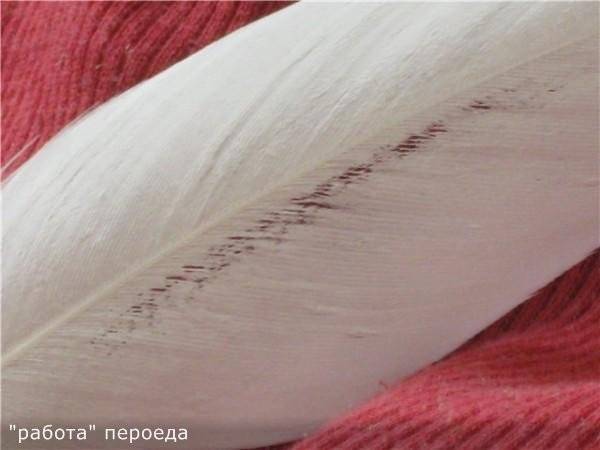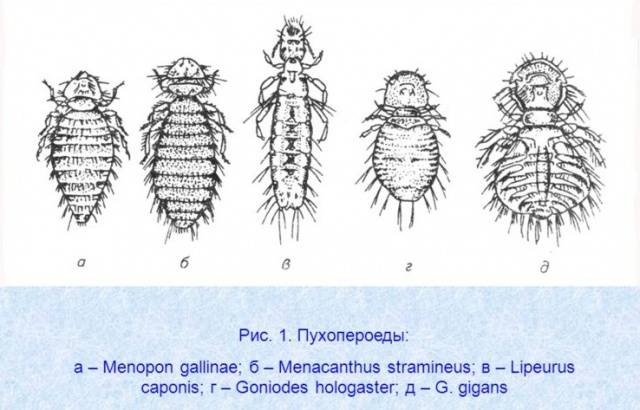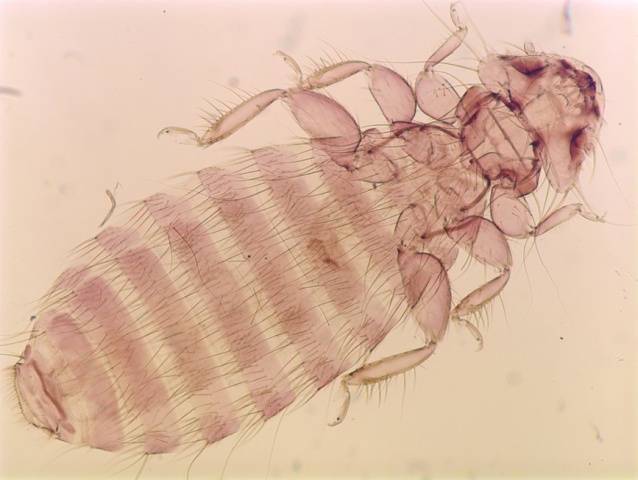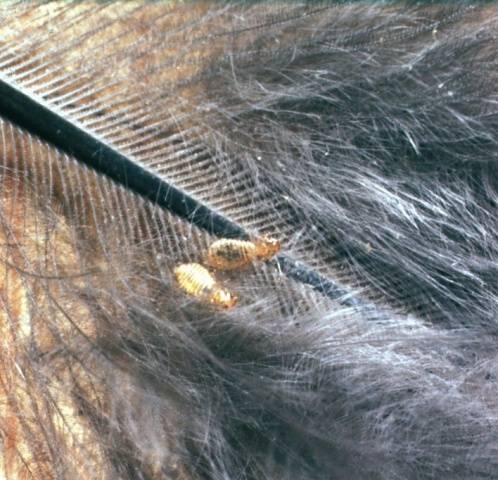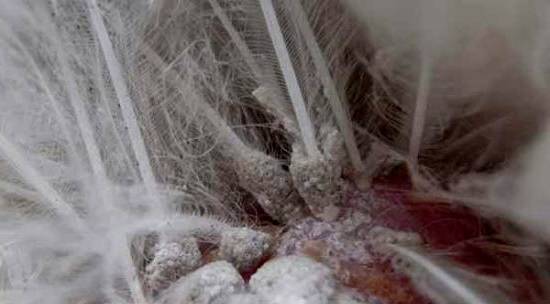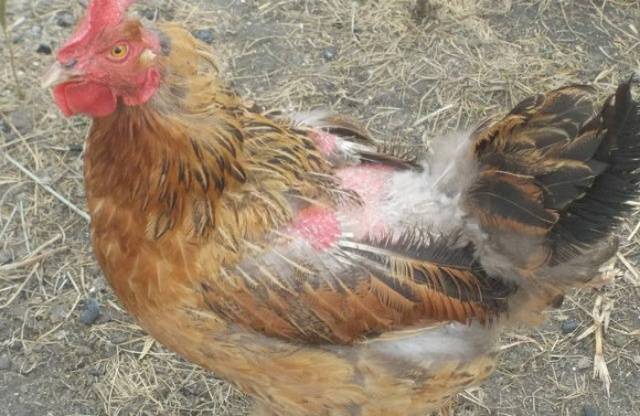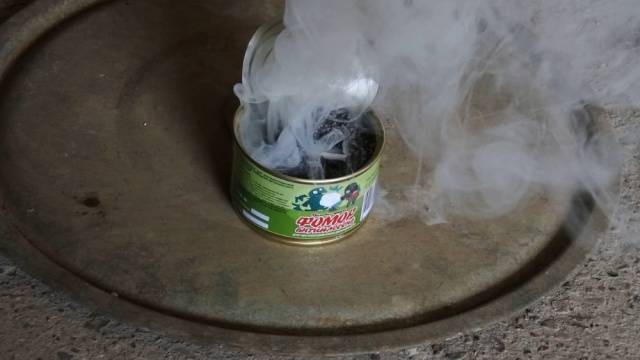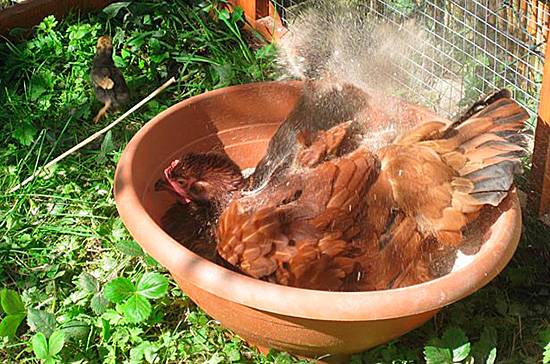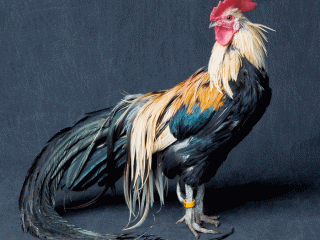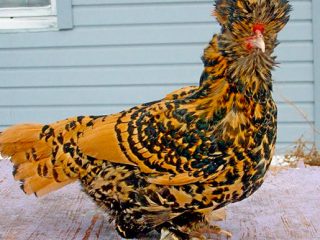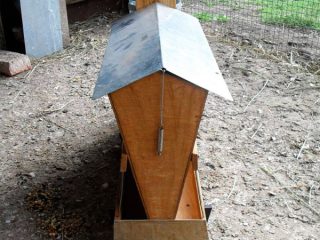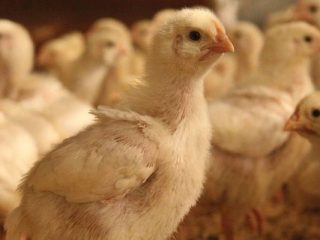Content
The variety of "pleasant" fauna inhabiting chickens is not limited to ticks alone. It was a shame for other insects to concede such luxurious food resources to only one group. parasites and they also settled in the feather cover. We are talking about insects, which scientists call feather eaters and lice, and the people are simply chicken lice. In fact, these downy eaters have nothing to do with lice and belong to a completely different genus: Mallophaga. Sometimes, by the name of this kind of parasites, they are called mallophages, and infection of chickens by downy eaters with malofagosis.
It is not possible to find out what chicken lice look like due to the complete absence of this type of insect. Perhaps the point is in the very narrow specialization of real lice. Lice species are so specialized that they can parasitize only on one or several types of hosts, enabling scientists to judge the degree of kinship of different types of living organisms. A native of the banking jungle, the chicken, most likely, simply did not have the evolutionary opportunity to acquire its own louse, compensating for this with 17 species of downy eaters.
The main difference between lice and downy eaters is the device of the oral apparatus. In a louse, the mouth apparatus is piercing-sucking, and in the down-eater it is gnawing.
At the same time, several types of downy eaters can parasitize on a chicken at once, but their "areas" do not overlap. Each type of parasite lives on its own part of the chicken body.
Downy eaters feed on the upper layers of the skin and down of feathers. With a significant prevalence of parasites, feather eaters can nibble the feather entirely, leaving only a quill. Different types of downy eaters look different. The picture shows the five most common types of downy eaters that parasitize poultry.
Pooh-eaters under the letters "b" and "c" without a microscope and at a quick glance can be confused with a human head louse.
Human head louse.
This photo, taken under a microscope, shows the downy eater of the species menacanthus stramineus. Seeing the parasite alive, as in the photo below, many believe that it was lice in chickens.
Since feather eaters are constantly confused with lice, people have a natural fear of contracting head lice.
How does feather-eating infestation occur?
Pooh-eaters are parasites of "one host", spending all their lives on the same individual. In the same place, the female lays eggs from 1 to 10 eggs per day, depending on the type of parasite. The eggs are attached to the feathers and after 5 - 20 days the larvae emerge from the eggs. After 2 - 3 weeks, the larvae turn into sexually mature insects.
Transmission of feathers from one bird to another occurs through close contact, through objects in the hen house or ash and dust baths, which, in theory, should help chickens get rid of parasites. In nature, this would be the case, since chickens would bathe in dust in different places. With crowded content of birds in chicken coops and aviaries, such baths, on the contrary, become breeding grounds for parasites. The downy eater reproduces very quickly and soon up to 10 thousand parasites can be lodged on the chicken.
Why is the downy eater dangerous?
In theory, the parasite should not be dangerous, it does not pierce the skin to drink blood, as a louse or flea do, causing irritation and introducing pathogens directly into the blood. In fact, the downy eater is no less dangerous than blood-sucking insects. Clinging to the skin with its paws when moving, the puffer eater causes severe itching in the chicken. The chicken tries to scratch itself and gradually pecks itself into the blood, providing infections with free access to the body. The loss of feathers damaged by the downy eater also does not improve the health of chickens.
Symptoms of a downy eater infection
Chickens are worried, constantly trying to comb themselves, pecking at the body. Feathers break and fall out. In place of the fallen feather, bare, inflamed skin remains. Often you can see only bare spots. If you take apart the feathers with your hands, you can see small, fast-moving insects. If you get the feeling that someone is crawling over the body, there is no doubt. It’s not a feeling, it’s really creeping. Pooh-eater who decided with the help of a man to move to another chicken.
How to get rid of parasites
In fact, the fight against downy eaters is not only possible, but also quite effective, provided the right tactics are used.
In the comments under the video, a real rally began with a demand to indicate the name of the drug that was used to take the peroed. In reality, the name of this particular tool is completely irrelevant. The drug should be one of those that are used for the prevention and destruction of ectoparasites: ticks, feather eaters, lice and fleas. Some drugs also kill worms as a bonus. There are a great many remedies for parasites today and they are produced in almost any form: suspensions, powders, aerosols, in some cases even special "sweets". But the latter is not for chickens, but for predators.
Depending on the number of livestock, you can treat the bird with aerosol or powder from Frontline, Bolfo and others.
For a large livestock or in order to save money, you can choose cheaper analogues: "Stomazan", "Butoks", "Neostomazan", "Deltsid", "Deltamethrin", "Ectocid". All drugs are very difficult to list and you will have to choose them, focusing on your wallet and the number of birds in the courtyard.
With a large population, it is more convenient to spray an insecticidal preparation in the form of an aerosol.
Dust, even if it is possible to find this discontinued product, it is better not to use it. It works very well as an insecticide, but hardly any chickens need to remove ugly chicks from their eggs.
Errors when processing from a downy eater
The instructions for most long-acting insecticidal preparations indicate that one treatment is sufficient to get rid of parasites for a period of 2 to 4 weeks. Therefore, by spraying the chickens once, the owners believe that they have got rid of the parasites. In the case of the downy eater, this is not the case.
First, these drugs work only on insects. The eggs remain unharmed and after a few days new downy eaters will emerge from the eggs. Therefore, the processing must be carried out repeatedly. Treatment is carried out at least 3 times with a break of 15 days between procedures.
Secondly, it is not enough to process only chickens. If we are fighting the feather eater, then we also process the chicken coop, perches and nest boxes.
Processing is also carried out multiple times.
Thirdly, surfaces must be treated very carefully, not missing a single crack, since peroed can avoid the action of the insecticide. The best option would be to process the chicken coop with a sulfur checker, after removing the chickens from it.
In the fight against the feather-eater, one should not rely only on folk remedies in the form of ash-sand baths for chickens. Saving one chicken from the downy eater, they will plant this parasite on the other. The contents of the baths need to be changed very often so that the parasites are less likely to get to the still healthy chicken.
There is also a little trick here. You can add insecticide powder to the ash-sand bath. But this is for those who are not afraid of "chemistry".
The downy eater has another surprise. Like fleas and ticks and lice, it can go without food for several years. Therefore, even if the treated chickens are moved to a new chicken coop, a thorough pest control must be carried out in the old one.
Conclusion
Pooh-eaters can cause a lot of trouble to the owners of chickens, but knowing how to deal with them and carefully following the instructions for using the drug and processing chickens and premises, parasites can be stopped while they have not yet spread throughout the private courtyard. With a strong infection of the poultry house with downy eaters, they can even be brought into the living quarters of the house. Nothing terrible, but unpleasant. Therefore, with processing chickens from downy eaters do not pull.
